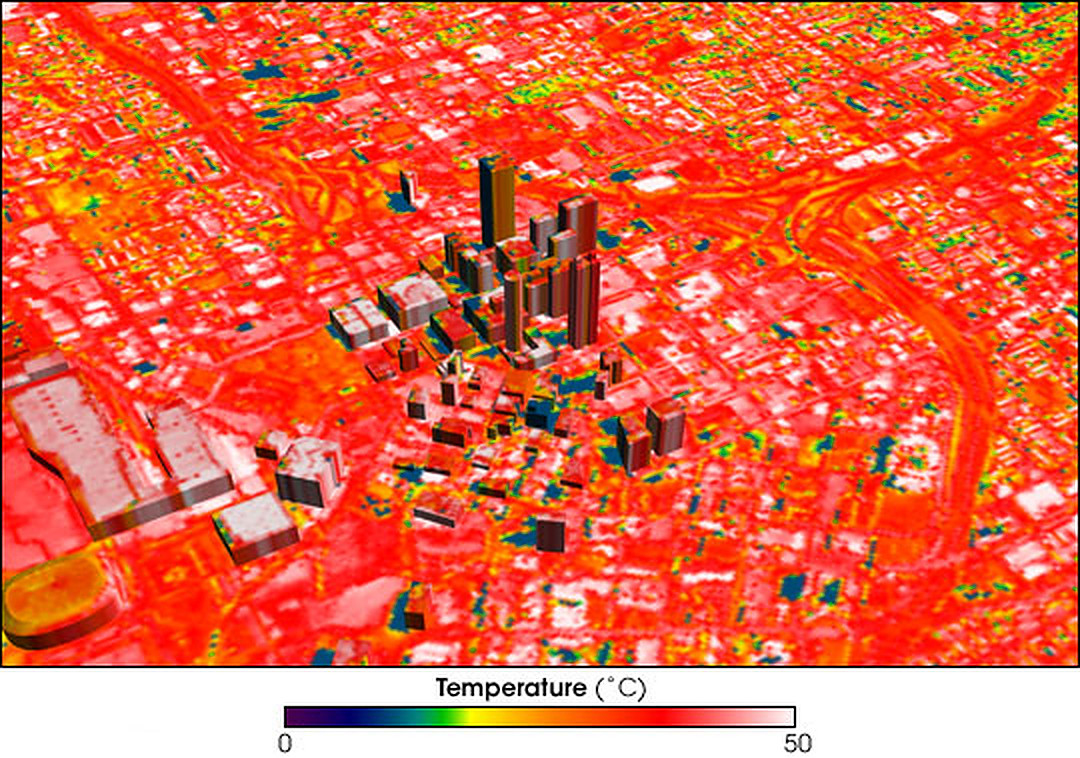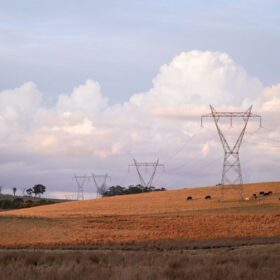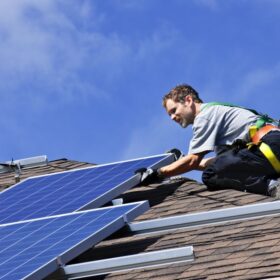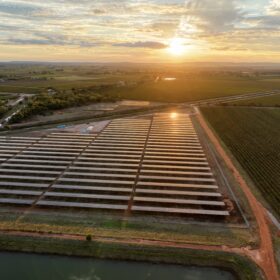From pv magazine Global
Scientists from research institutions across China have developed a model to evaluate the impact of rooftop PV on the energy use of residential buildings and their surrounding air temperatures during heatwaves. They revealed their findings in “Thermal and energy benefits of rooftop photovoltaic panels in a semi-arid city during an extreme heatwave event,” which was recently published in Energy and Buildings.
The study assesses the impact of rooftop PV arrays of varying energy efficiencies on mid-rise residential buildings. In particular, it investigates the impact on air conditioning use and surrounding urban temperatures. The researchers conducted the study in northeastern China, in a semi-arid area that was hit by an extreme heat wave in 2018.
They handled the numerical evaluation with the Weather Research and Forecasting (WRF) model, coupled with building effect parameterisation (BEP) and building energy model (BEM).
“Forced by the atmospheric conditions on the lowest level of the WRF model, the system computes the surface momentum, heat, humidity and turbulent kinetic energy fluxes induced by the underlying urban surface and feeds back these fluxes to the atmospheric dynamic governing equations,” said the researchers.
The academics analysed 12 simulations with different percentages of rooftop coverage and panel conversion efficiency against a control case. They assumed that the PV arrays were installed in parallel and at a certain height away from the roof. It was also assumed that every building in the city used an air-conditioning system during the modelled heatwave conditions.
The control case had an air-conditioning system installed, but no rooftop PV. The 12 scenarios consist of rooftop PV coverage levels of 25%, 50%, 75%, and 100%, with conversion efficiencies of 10%, 20%, and 30%.
The results showed that an increase in covered area and conversion efficiency contributed to strong cooling effects. Rooftops with 100% PV coverage and energy efficiency of 30% could lower air temperatures by 0.4 C to 0.7 C. The combination reduced air-conditioning energy consumption by 14.74%.
“Such results indicate that the cities with a lower albedo and emissivity could benefit more from [rooftop PV] implementation in urban heat mitigation, along with an increasing urban effective albedo,” said the researchers.
Based on the 12 scenarios, the average daily cooling energy consumption reduction ranged between 1.29 MWh and 6.58 MWh per square kilometre. That represented an energy reduction of 2.89% to 14.74 %, relative to the control scenario. The 25% rooftop coverage and 10% efficiency scenario showed negligible thermal impacts, “suggesting a minimal threshold of [rooftop PV] coverage in terms of improving thermal environment,” the researchers concluded.
This content is protected by copyright and may not be reused. If you want to cooperate with us and would like to reuse some of our content, please contact: editors@pv-magazine.com.







Thank you Beatriz, this is fascinating research. I imagine China’s hot dry areas are not very different to Australia’s.
”
The results showed that an increase in covered area and conversion efficiency contributed to strong cooling effects. Rooftops with 100% PV coverage and energy efficiency of 30% could lower air temperatures by 0.4 C to 0.7 C. The combination reduced air-conditioning energy consumption by 14.74%.
“Such results indicate that the cities with a lower albedo and emissivity could benefit more from [rooftop PV] implementation in urban heat mitigation, along with an increasing urban effective albedo,” said the researchers.
Based on the 12 scenarios, the average daily cooling energy consumption reduction ranged between 1.29 MWh and 6.58 MWh per square kilometre. That represented an energy reduction of 2.89% to 14.74 %, relative to the control scenario. The 25% rooftop coverage and 10% efficiency scenario showed negligible thermal impacts, “suggesting a minimal threshold of [rooftop PV] coverage in terms of improving thermal environment,” the researchers concluded.
”
Now, an aspect to this, is that, here in Western Australia, where the state government punishes householders for having and using household rooftop photovoltaic systems and solar water heaters, and, in the only state or territory in Australia, where the state government has not provided financial assistance and therefore incentives, to householders to get installed and us, household rooftop photovoltaic systems with BESS’sif the state government changed its attitude (and its taking the millions of dollars in “donations” from fossil fuel companies)and started to act in the interests of the people of Western Australia, instead of being at war against the people of Western Australia, and, instead, provided financial assistance and less hostile regulations, to encourage householders in Western Australia to get as large household rooftop photovoltaic systems with BESS’s, as our buildings would support, with the objective of leading to saturation of household rooftop photovoltaic systems in Western Australia, that would lead to lower summer peak demand on the electricity grid, through air conditioner usage, thereby eliminating the problems that we have with the unstable grid and the inadequate grid electricity supply, and, would eliminate the need for the diesel generators that are to be used to prop up the decrepit and inadequate grid electricity generator power stations.
But, then, in a state where laws are created and passed, according to the money paid to MP’s by big companies, the interests of Western Australia and its people, are treated with contempt, and, the state deteriorates increasingly further, in the absence of a government concerned with the interests of the state and its people.